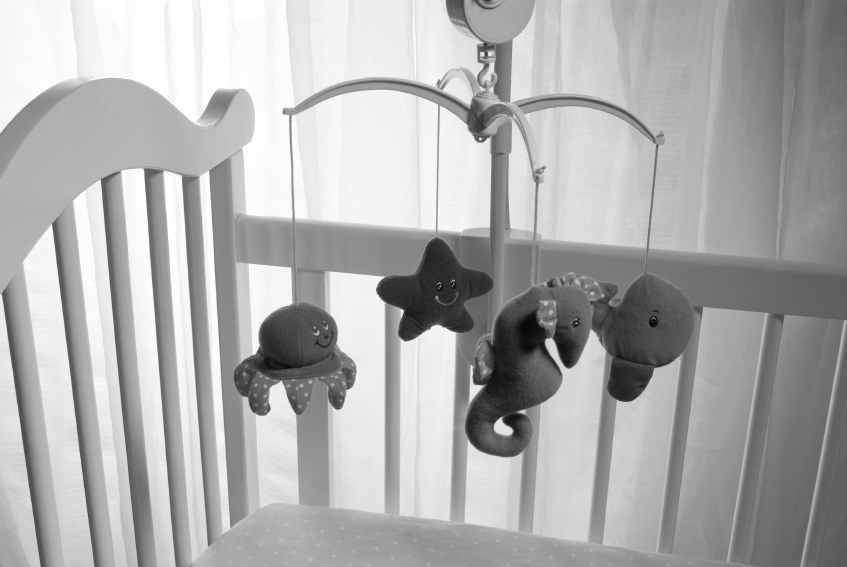“You’re hungry all the time, even when you’re sleeping,” Rhonda Wile explained the first time we met. “It feels like constant starvation. You gradually understand that you are going to be starving – starving for a child — for the rest of your life.”
Rhonda and I were sipping iced tea in the Wile’s cactus-studded yard in the Arizona twilight. I’d come to interview Rhonda and her husband Gerry about their fight with infertility and to explore the remarkable resolution they chased.
After a costly vasectomy reversal, a miscarriage at six weeks, and the discovery of a rare uterine quirk that meant Rhonda could never bear children, Rhonda had stumbled into the startling, mesmerizing labyrinth of international surrogacy. She and Gerry had been to Mumbai, India five times in search of a surrogate they could afford on the combined salaries of a nurse and firefighter. They’d returned with three beautiful, healthy babies.Infertility is startlingly common, afflicting ten to twelve percent of the human population. Also common: disturbing, instinctive reactions to its diagnosis. Responses often include disbelief, anxiety, grief, disappointment, and isolation. The despair can sometimes last a lifetime.
Infertility devastates both men and women. Unfortunately, however, infertility is not a gender-neutral affliction. The experience is often far more difficult, physically and emotionally, for women.
As I got to know Rhonda and Gerry, and to understand the challenges infertility forces upon its victims, I began to see that the deepest cut is often the disease’s ability to rob a woman of the certainty that God or nature wants her to be a mother. Infertility, cruelly, often makes a woman even more desperate for a baby than she ever could have imagined, while at the same time undermining her confidence in her natural ability to be a good mother.
Nearly every society incorrectly blames women for a couple’s infertility. Few people know that George Washington, the father of our country, was never an actual father, despite marrying a demonstrably fertile widow who’d already had four children by age 23. In some cultures, men receive sanction for abandoning or even killing wives who cannot conceive, or carry to term, healthy infants.
The reality, however, is that the medical genesis of infertility falls equally to the male partner, the female partner, or a baffling combination of the two. In Washington’s case, modern infertility experts believe he had a rare condition, Klinefelter’s Syndrome, which causes excessive height, bad teeth, and sterility. But because infertility still tends to be a taboo subject, there are limited chances to educate people about its commonality, origins, and the radical new medical treatments available following the development of in vitro fertilization in the late 1970s.
As a result, many sufferers suffer alone.
Even once a woman finds her own personal solution — treatment, childlessness, adoption, or surrogacy — the hidden shame can surface: am I less maternal than someone who had a baby naturally? Even women who report waves of profound gratitude after yearlong trials to have a baby can experience this secret, debilitating self-doubt.
That is most definitely not how motherhood should feel.
What this means is that the most critical hurdle to overcoming infertility is letting go of your (and society’s) convictions about the way parenthood is “supposed” to be. Barbara Collura is the director of RESOLVE, a national infertility group based in McLean, Virginia. Long before she was a RESOLVE employee, she was a client battling infertility herself. She describes how her own personal resolution came from separating pregnancy and parenthood.
“I couldn’t give up my dreams of becoming a parent just because I could not get pregnant,” Collura says today, a dozen years later. Like many people, she and her husband decided they didn’t need the biological connection between parent and child. Today, Collura is the happy mother of a son adopted from Guatemala in 2001. But the first step, after accepting her body’s limitations, was to disconnect the nine months of pregnancy from the lifetime it takes to raise a child.
This deliberate separation of pregnancy and parenthood also forms the foundation of modern gestational surrogacy, the solution Rhonda and Gerry Wile found in India. Gestational surrogacy differs from traditional surrogacy, the process that the Mary Beth Whitehead case made infamous in New Jersey in the 1980s. A gestational surrogate has no biological link to the baby she is gestating; the baby she carries is not genetically or legally her child. An embryo is created from another woman’s egg and donated sperm via IVF, and surgically implanted in the surrogate’s uterus.
Sperm from one source. An egg from another. A womb wholly separate from both.
This is gestational surrogacy, the new bridge bypassing infertility.
This mind-boggling change in conception and gestation shakes the human race’s centuries-old definition of traditional parenthood. Gestational surrogacy nullifies the biological imperative for heterosexual attraction, intercourse, and pregnancy that have preceded parenthood since the beginning of the human race. For the first time in history, it has become conceptually and medically possible to intentionally separate and outsource the three fundamental building blocks needed to create human life.
The only requirement is intent to be a parent, and, at least at this moment in America, an enormous amount of money to pay a surrogate, a lawyer and an IVF doctor. Gestational surrogacy can cost up to $100,000 in the United States. In other countries such as India, Panama and Ukraine, surrogacy clinics charge ten to twenty percent as much – a new twist on global medical tourism.
Jamie Williams, a mother herself, four-time surrogate and longtime surrogacy advocate currently working for the Surrogacy Source in California, explains the growing popularity of gestational surrogacy, and how the biological disconnect helps surrogates manage the psychological challenges of carrying, and then surrendering, a baby for someone else:
“From day one, surrogacy is not like being pregnant with your own baby. When it’s your baby, a hundred times a day you think about what baby name to pick, what clothes your baby will wear, what color crib sheets to buy. When you’re pregnant with someone else’s baby, one hundred times a day you think about how happy they are boing to be when their baby is born, when they take their baby home from the hospital to their house. You’re not abandoning your baby or giving her up or selling it – because it is never your child. You’re doing a beautiful thing and you know from the first second that it is never going to be your baby. The birth is the final chapter for you – but it’s the first chapter for them.”
Surrogacy is built upon medical, legal and financial transactions, inextricably mixed with parents’ dreams and disappointments. Four million babies have been created since ART and gestational surrogacy were developed in 1978. Infertility, as the human race has understood it for thousands of years, has been eradicated for the vast majority of sufferers.
On October 25, 2011, eight thousand miles away from her babies’ birthplace, Rhonda Wile – a woman whose only pregnancy ended in miscarriage at six weeks — started another day dominated by the absurd joy of life with a rambunctious two-year-old and healthy twin infants. That day, exhausted but happy, she posted the following words for 800 million potential readers on Facebook:
“Holding your sweet child as they fall asleep in your arms. The very best feeling in the world. This is how I was meant to be a Mommy, and I wouldn’t change it for the world.”
This is not to trivialize how challenging – morally, legally, financially, and psychologically – having a baby via surrogate can be for everyone involved. But we often forget how complicated and emotionally messy parenthood, even when achieved the “old-fashioned way,” often is. One of the few upsides of infertility – and its complex, expensive solutions – is that infertility forces parents to confront the reality of parenthood long before their baby is born.
This article has been adapted from a piece originally published on Psychology Today.





